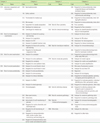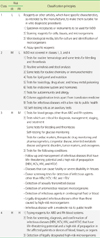Abstract
Background
The Global harmonization task force (GHTF) recommends a separate regulation system for in vitro diagnostic medical devices (IVDD), because false test results can pose a risk to individual and/or public health. However, in Korea, many reagents for IVDD are not monitored, although IVD analyzers and some reagents are monitored under the Medical Device Act and Pharmaceutical Affairs Act, respectively. Our aim was to propose a draft for a Korean coding and classification system for IVDD.
Methods
For preparing the draft, we reviewed the Korean Current Procedural Terminology for Health Insurance and principles of the coding and classification system for IVDD of the GHTF, the USA, Japan, Canada, Australia, and the EU. The draft was reviewed by consultants from relevant societies, such as Korean Medical Association, Korean Society for Laboratory Medicine, The Korea Association of Medical Technologists, and Korea Association for Diagnostic Laboratory Reagents, and was then publicly discussed at a conference.
Results
IVDD were classified into 4 classes on the basis of the risks they pose to individual (IR) and public health (PR): class 1 (low IR and low PR), class 2 (moderate IR and low PR), class 3 (high IR and/or moderate PR), and class 4 (high IR and high PR). IVD analyzers, reagents and other general laboratory equipments were categorized and coded using the letter D and 7 (2+3+2) digits.
Figures and Tables
References
1. Study Group 1 of the Global Harmonization Task Force. Principles of in vitro diagnostic (IVD) medical devices classification. Final document. GHTF/SG1/N045:2008. 2008. Global harmonization task force.
2. The Korean Society for Laboratory Medicine. Laboratory medicine. 2009. 4th ed. Seoul, Korea: E-Public.
3. Product classification. US Food and Drug Administration. Updated on Apr 2012. http://www.accessdata.fda.gov/scripts/cdrh/cfdocs/cfpcd/classification.cfm.
4. Notice of No. 0401031 from Japan drug and food administration. 2005. 04. 01. For common name of in vitro diagnostics.
5. Classification of IVD medical devices. Department of Health and Ageing, Australian Government. Updated on Nov 2011. http://www.tga.gov.au/pdf/ivd-classification.pdf.
6. Guidance for the risk based classification system of in vitro diagnostic devices. Health Canada. Updated on Apr 1998. http://www.hc-sc.gc.ca/dhp-mps/alt_formats/hpfb-dgpsa/pdf/md-im/ivd-rsk_idiv-rsq-eng.pdf.
7. European standards In vitro diagnostic medical devices (98/79/EC). European Commission. Updated on mar 2012. http://ec.europa.eu/enterprise/policies/european-standards/harmonised-standards/iv-diagnostic-medical-devices/.
8. Sohn HJ, Kang HY, Park MS, Seo IC. A study on regulations of USA, Europe and Japan for in-vitro diagnostic devices. Report from Korea food and drug administration (05092 SAENUIPYEONG 352). 2005. Korea Food and Drug Administration.
9. Park YJ, Jeong EW, Choi KS, Ahn MR, Noh HS, Kim HJ, et al. Studies on international harmonization for management of in vitro diagnostics. Final report of R & D project from Korea food and drug administration (09121 CHEOMDANPYEONG 393). 2009. Korea Food and Drug Administration.
10. Kim Y. A study of a regulatory system for medical devices based on classification. Report from Korea food and drug administration (07112 KITASA 795). 2007. Korea Food and Drug Administration.
11. Australian national notifiable diseases case definitions. Australian Government. Updated on Jul 2011. http://www.health.gov.au/internet/main/publishing.nsf/content/cdna-casedefinitions.htm.




 PDF
PDF ePub
ePub Citation
Citation Print
Print






 XML Download
XML Download